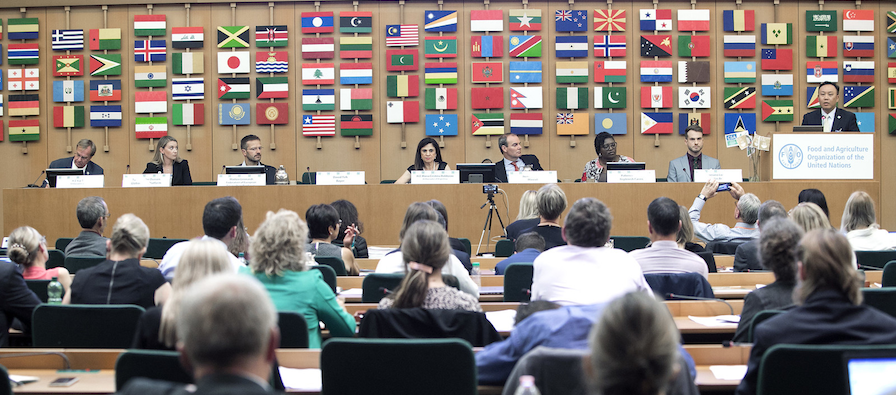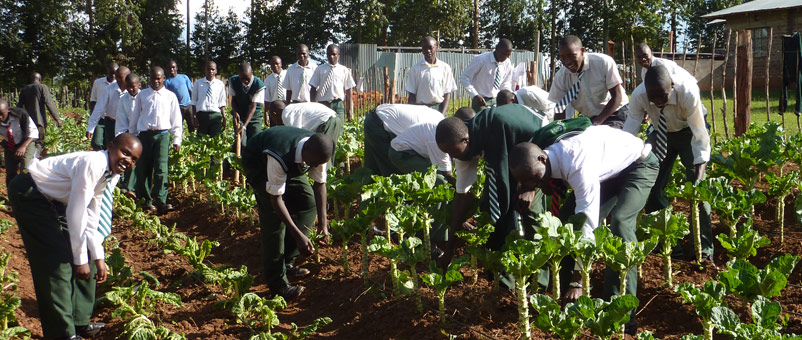Diversity is just as important in food production as it is for healthy, nutritional diets, farmers from around the world told this year’s Committee on World Food Security meeting.
From dairy to aquaculture, farmers from across the sector said access to the full range of tools, technologies and systems could help meet the challenge of feeding a rising population in ever-changing conditions.
A panel of farmers and experts spoke at a side event co-hosted by Farming First on innovation and agroecology against the backdrop of rising hunger for the third consecutive year.
“Innovation is one of the main drivers for farmers to become more sustainable,” said Juan Minvielle, an Argentinian farmer and president of Maizall. “It helps both larger farmers and smaller farmers.”
Mr. Minvielle told the side event how improved biotech varieties of soybean meant he had improved his yields while reducing the need for additional inputs like pesticides, which in turn meant he could practice no-till farming to keep soil disturbance to a minimum.

14 October 2019, Juan Minvielle at the CFS 46 Side Event: SE066 Innovation and Agroecology: A Path to Sustainability: Are innovation and agroecology capable of working hand-in-hand? Credit: ©FAO/Giulio Napolitano. Copyright ©FAO.
The success of no-till farming in Argentina and elsewhere had inspired Patience Koku, a Nigerian farmer and member of the Global Farmer Network, who said the practice was helping Nigerians cope with changing weather patterns and allowing soil to retain moisture.
“We have to do everything we can to achieve the Sustainable Development Goals,” Patience said.
“There is huge urgency needed to allow people to have access to the right tools. Access is really one of the challenges we have. What we’ve been able to do is to realise we can easily transfer this technology.”
Matteo Leonardi, an Italian trout farmer, said that aquaculture was in itself a form of diversification within agriculture. “It’s important to understand that no one technology is better than another,” he said.
As well as new technologies, the panel highlighted the importance of data to help farmers take informed decisions for maximum results.

14 October 2019, Patience Koku at the CFS 46 Side Event: SE066 Innovation and Agroecology: A Path to Sustainability: Are innovation and agroecology capable of working hand-in-hand? Credit: ©FAO/Giulio Napolitano. Copyright ©FAO.
Luciano Loman, a Nuffield International scholar and executive director of meteorological technology company Metos, said innovation and data had helped Brazil transition from a country importing food to one of the world’s agricultural powerhouses.
“You cannot manage what you don’t measure,” Luciano said. “Technology is now allowing us to measure multiple points in the field. When you’re armed with all this plethora of information then you can take better decisions and be more efficient.”
One example of improved efficiency and sustainability was the re-use of water within agriculture.
Tara Vander Dussen, a dairy farmer from New Mexico, explained how she re-used water up to five times from using it to cool the milk to watering crops.
“Water is our limiting resource. Our goal is always to recycle water and reduce water use,” Tara said.

14 October 2019, Rome, Italy – CFS 46 Side Event: SE066 Innovation and Agroecology: A Path to Sustainability: Are innovation and agroecology capable of working hand-in-hand? Credit: ©FAO/Giulio Napolitano. Copyright ©FAO.
“I truly believe that as farmers we have been charged with the greatest challenge of our generation, feeding more people than ever before using less.
“Over last 75 years, the dairy industry has been able to produce one gallon of milk using 65 per cent less water and 90 per cent less land.”
The panel took place as the Committee on World Food Security began work on its Agroecology and Other Innovations report.
In his closing remarks, Kip Tom, the US ambassador to UN agencies in Rome, said: “Today, we now have millions of opportunities to experiment with farming systems on our farms. We can measure, monitor and control.
“We need to be very open and listen to others around the room. When we talk about agroecology, let’s make sure it’s inclusive of all forms of agriculture.”
If you missed the Future of Farming side event on agroecology and innovation, you can catch up on Farming First TV and read more about agroecology here.



